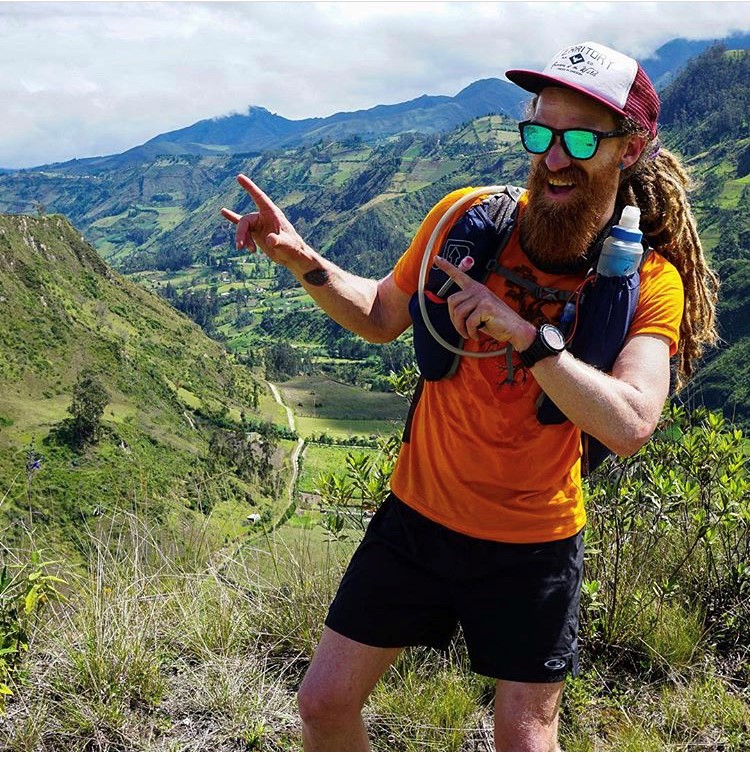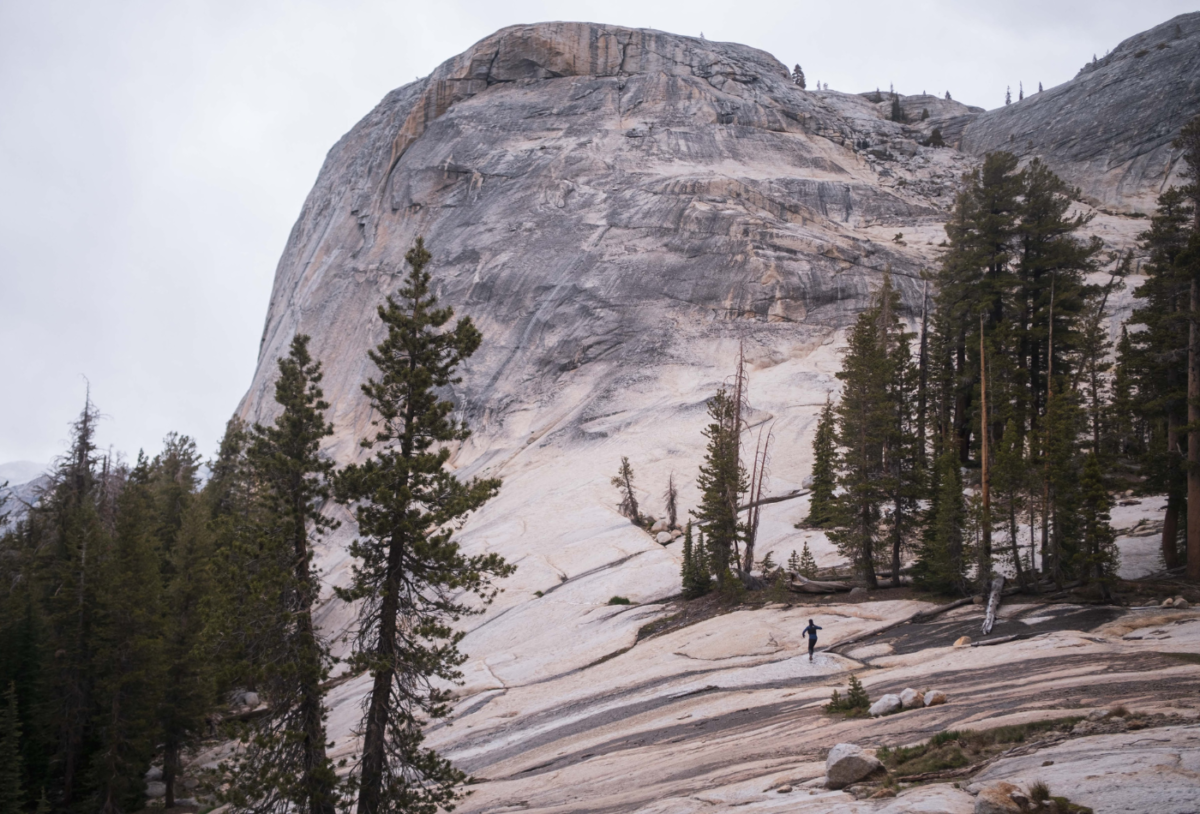How An East Coast Runner Can Prepare for a West Coast Aspire Adventure

By Ian Ramsey
So you’re coming west to run, hopefully on an Aspire Adventure Running Trip! And you live someplace that is . . . not the mountainous west. Maybe you live in Connecticut, or Minneapolis, or Tampa. Even if you live in a more mountainous locale like western North Carolina, the Ozarks, or the Berkshires, you might still be wondering about your ability to perform in different elevation and topography.
First off, know that there are lots of workarounds. Every year, runners who live at sea level (and often in urban areas) compete in mountain races at a high level. Stephanie Case, a UN civil rights lawyer, has been competitive in big mountain races like Tour de Geants and UTMB despite often training in compounds in Afghanistan and Sudan where her running was limited to a tiny rooftop and a set of stairs. Zach Miller won the JFK 50 after training on cruise ship treadmill. Briton Tom Evans has won CCC and podiumed at Western States despite living in Leicestershire, a moderately hilly part of England.
East Coast trails are often steeper (why make switchbacks when you can just go straight up and down?) and more technical (roots and rocks everywhere) than west coast trails. Living in Maine, I’ve rarely encountered west coast trails that were as technically challenging as the trails in New England.
That said, the elevation on the west coast tends to be a bit higher, the distances further, the landscapes more wild. So how to adapt? How to train?
- Use What You Have.
Do what you can to mimic the terrain. If you live in an urban area and don’t have technical terrain, practice hopping from rock to rock or practice with an agility ladder. If you have small kids and can’t go far from home, do repeats around your block. If you have smaller hills, then do hill repeats. Kaci Lickteig, winner of Western States and many other races, lives in Nebraska where her biggest hill is a 250 foot climb. So she does LOTS of hill repeats. If you live in Miami, find some stairs in a highrise. If you live in Boston, drive up to New Hampshire’s White Mountains for a weekend. If you need to stack up one end of your treadmill, do that. Remember, humans are a highly adaptable species: we can figure things out.

- Work on Speed and Aerobic Strength
At the end of the day, running is the name of the game here, and running is dependent on speed and aerobic strength. With that in mind, try to make most of your running relatively easy (aka zone 2), with some integrated speedwork to make yourself more efficient. You can integrate strides at the end of your run or pick one or two days to focus on them-they’ll tighten up your technique and develop your speed. Most runners make their easy runs too hard and their hard runs too easy. A great resource for this is Matt Fitzgerald’s book 80/20 Running: Run Stronger and Race Faster by Training Slower.
- Practice Power Hiking
The dirty little secret of trail running is that, for most of us, it’s often as much hiking as running. Unless you’re Pau Capell or Clare Gallagher, you’re probably hiking, especially on the uphills, some of the time, maybe more. So you should practice that! One of my favorite training methods is putting on a twenty-pound weight vest and going for a hike (which could also be on a treadmill). You’ll build sturdiness and all of the small muscles involved in balance. If you might be hiking for, say, 25% of your mountain adventure, shouldn’t you train for it? Pro Tip: If you’re comfortable enough, leave the weight vest loose so it can swing around a bit and really build those little muscles. This is also an excellent chance to practice using poles!
- Practice Nasal Breathing
Most runners breathe through their mouth much of the time, without thinking about it. Unfortunately, mouth-breathing is often a sign that the runner is moving into a predominantly anaerobic state and can only maintain that effort level for a short period of time as their nervous system y use short-term fuel sources such as glucose.
One way to train better endurance is to practice nasal breathing, which allows you to stay in an aerobic state, and burn fat as a primary fuel source. Nasal breathing also doesn’t get your nervous system ramped up, so you stay more relaxed (mouth-breathing is a physiological sign to the body of an emergency). Running while nasal breathing takes some practice, and initially, you’ll be running a bit slower, but your body will adapt over a few weeks. If you can run this way, you’re pretty much guaranteed to stay in Zone 2, which is very sustainable for longer distances.
Here’s a case study: A friend of mine in his forties ran the Vermont 100 a couple years ago, nasal-breathing only until mile 70. As a result, he felt relaxed and his nervous system didn’t get jacked up, and he finished sub-24 feeling great.
- Leg and Strength Training
If you want to build durability and strength, try doing some cross-training. This can include everything from smaller strengthening exercises (clamshells, monster walks, etc) to using weight training. I highly recommend the Pedastal and Myrtl routines (google them) as ways to strengthen your hips and adductors. Any single leg balance or core exercises will be very helpful for making you more sturdy. If you’re interested in getting into heavier weight-training (deadlifts, for instance are great for switching on and strengthening hamstrings), make sure you get some technical instruction so that you’re doing it right-you don’t want to get injured trying to avoid injuries! That said, weight-training is a great way to complement your running training and to reduce the number of miles you need to run in training, saving time and possibly injuries.

- Sauna
If you live at sea level, using a sauna or heating training can increase blood plasma volume and mimic some of the adaptations from living at elevation. Generally, 20-30 minutes in a dry sauna sometime after a run can help with those adaptations and can also make you mentally stronger. Generally, it takes 2-3 weeks of daily practice to get most adaptations if you’re doing it consistently. After that initial period of adaptation, you can maintain the adaptations every few days to maintain the benefit.
I’m also a big fan of using an ice bath with breathing exercises to train up my stress response and to drive down inflammation.
- Complementary activities
One of the challenges of all this running training is avoiding injury, especially overuse injuries. With that in mind, I highly recommend doing some complementary activities to support your running: biking, nordic skiing, backcountry skiing, surfing, hiking. If you ever start to feel a niggle while running, hop on the bike or skis for a couple days before it escalates. That will allow you to maintain your aerobic base and strength without having to take time off. It will also keep you excited about running and make it seem less like a chore.
- Practice with Your Gear
Chances are, if you’re coming from a less mountainous place, you may want to practice with backcountry running gear that you don’t always have a chance to use at home. Get to know your vest and where you like to store things so that you can pull them out quickly. Practice using a water filter. Make sure those gaiters fit your shoes and that your socks can get wet without blistering up your feet. How much rain and wind are you comfortable in with that light shell? Most of all, practice using poles (including where to store them on your vest) if you haven’t already practiced with them. Trying to figure out gear late in a backcountry afternoon makes challenging days less rewarding and more stressful. And our goal is to make these adventures as joyful as possible.
Do you need to do all of these things? Probably not. Everyone has different strengths, weakness, propensities, and comfort levels. But the fewer variables and unknown you have to worry about, the greater your opportunity to be fully present to the adventure, to push yourself, and to have more fun!
Resources
Breathing: https://trailrunnermag.com/training/breathe-to-perform.html
Pedestal Routine: https://www.youtube.com/watch?v=wqtERE1oR1s
Myrtl Routine: https://www.njsportsmed.com/files/myrtl_routine.pdf
80/20 Running: https://www.8020endurance.com/

With three decades spent exploring the PNW and Alaska, Ian is based in Maine, where he directs the Kauffmann Program for Environmental Writing and Wilderness Exploration, and teaches writing, ecology, brain science, music and mindfulness to high school students. With over two decades leading trips and expeditions across the US, Alaska and internationally, he loves empowering people to take agency in their lives and discover new places. Ian is a poet and graduate of the Rainier Writing Workshop, and his writing has been featured in places like Terrain.org, Orion and High Desert Journal. He also directs a community steelband, loves kayaking big water, drinks copious amounts of coffee, geeks out around nutrition, literature and fitness, and was once a member of an Inuit Dance Troupe.
Check out his website at Ianramsey.net

